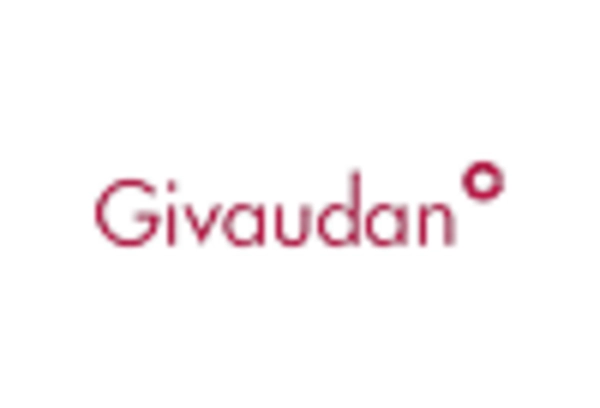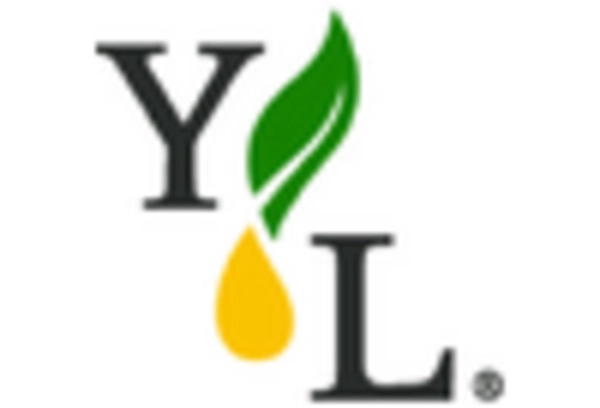Growing Health Consciousness
The increasing awareness of health and wellness among consumers appears to be a pivotal driver for the citrus oil market. As individuals seek natural alternatives to synthetic products, the demand for citrus oils, known for their therapeutic properties, is likely to rise. Citrus oils, such as lemon and orange, are often utilized in aromatherapy and personal care products, which are gaining traction in the wellness sector. According to recent data, the essential oils market, which includes citrus oils, is projected to grow at a CAGR of approximately 8% through 2027. This trend suggests that the citrus oil market may experience a corresponding increase as consumers prioritize health benefits and natural ingredients in their purchasing decisions.
Rising Popularity of Aromatherapy
The aromatherapy sector is experiencing a surge in popularity, which appears to be a significant driver for the citrus oil market. Citrus oils, such as bergamot and grapefruit, are favored for their uplifting and refreshing scents, making them popular choices in aromatherapy practices. As more consumers turn to holistic approaches for stress relief and mental well-being, the demand for essential oils, including citrus varieties, is likely to increase. Market analysis suggests that the aromatherapy market could grow at a CAGR of around 10% over the next few years. This growth may translate into heightened interest in the citrus oil market, as consumers seek natural solutions for enhancing their emotional and physical health.
Innovations in Product Applications
Innovative applications of citrus oils across various industries may serve as a crucial driver for the citrus oil market. Beyond traditional uses in food and beverages, citrus oils are increasingly being incorporated into cleaning products, cosmetics, and personal care items. The versatility of citrus oils, combined with their appealing fragrances and antimicrobial properties, makes them attractive to manufacturers looking to differentiate their products. Recent trends indicate that the personal care market is projected to grow by approximately 5% annually, which could lead to increased utilization of citrus oils in formulations. This trend suggests that the citrus oil market may benefit from the expanding range of applications and the growing demand for multifunctional products.
Expansion of the Food and Beverage Sector
The food and beverage industry in the US is undergoing significant expansion, which could serve as a substantial driver for the citrus oil market. Citrus oils are widely used as flavoring agents in various food products, including beverages, desserts, and sauces. The growing trend of incorporating natural flavors into food products aligns with consumer preferences for clean labels and transparency. Recent statistics indicate that the US food and beverage market is expected to reach a valuation of over $1 trillion by 2026. This growth may lead to increased demand for citrus oils, as manufacturers seek to enhance flavor profiles while adhering to consumer demands for natural ingredients, thereby positively impacting the citrus oil market.
Consumer Preference for Sustainable Products
The shift towards sustainability and eco-friendly products is becoming a prominent driver for the citrus oil market. Consumers are increasingly seeking products that align with their values regarding environmental responsibility and ethical sourcing. Citrus oils, often derived from renewable resources, are perceived as more sustainable alternatives compared to synthetic fragrances. Recent surveys indicate that nearly 70% of consumers are willing to pay a premium for products that are sustainably sourced. This growing preference may encourage manufacturers to incorporate citrus oils into their offerings, thereby enhancing the citrus oil market. As sustainability becomes a key factor in purchasing decisions, the demand for responsibly sourced citrus oils is likely to rise.

















Leave a Comment